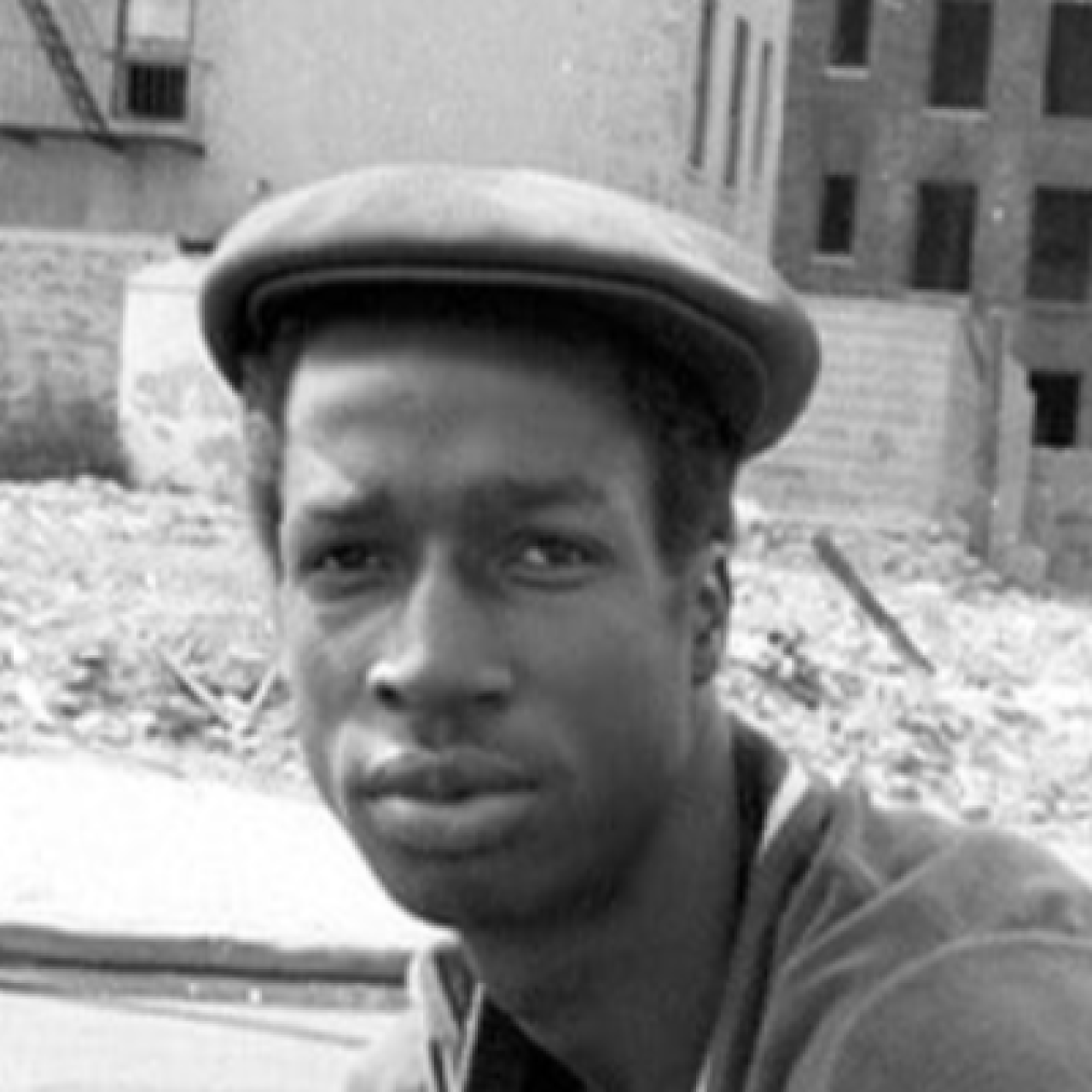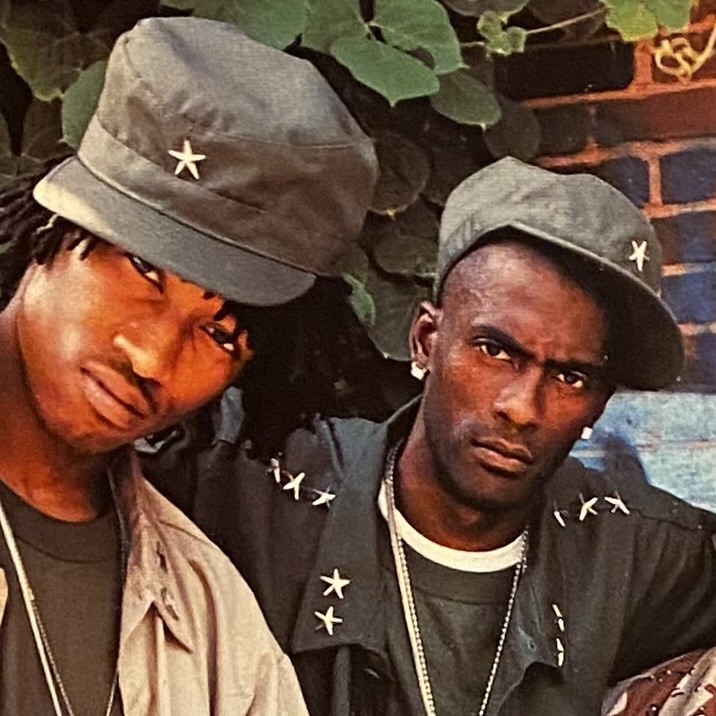In 1981, most of the hottest hip-hop action didn’t happen on rap records.
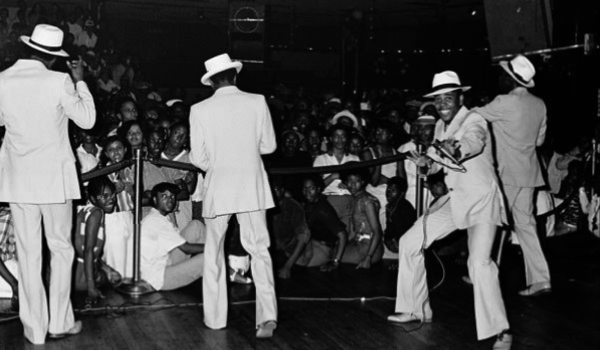
Much like silent filmmakers who created their greatest work as talkies swept over 1920s Hollywood, the live hip-hop scene in the Bronx and Harlem reached an astonishing artistic peak just before recorded rap and the crack plague ended it forever. 1981 is the year that the Cold Crush Brothers battled the Fantastic Five on July 3 at Harlem World. The crowd that night deemed the Five the winner. But when cassette tapes of the show circulated around the world, Cold Crush secured their reputation as perhaps the greatest old-school group who never excelled on wax.
In December 1981, Busy Bee Starski faced off against Kool Moe Dee from the Treacherous Three at Harlem World. The former began with a typical party-rocking routine, shouting out zodiac signs and fast-food restaurants. Then Kool Moe Dee attacked with uncharacteristic fierceness. “Hold on Busy Bee, I don’t mean to be bold/But put that bob-diddy-bob bullshit on hold,” he rapped as the crowd screamed their approval. The moment permanently changed battles from a gentlemanly display of skills to no-holds-barred lyrical combat.
And when a pop/rap hybrid topped the Billboard singles chart in March 1981, it didn’t originate from the usual suspects. Debbie Harry and Chris Stein, the lead singer and chief songwriter/guitarist for Manhattan new wave band Blondie, grew fascinated with the nascent hip-hop scene, and made regular trips to uptown hotspots like Disco Fever. The couple’s forays inspired “Rapture,” a song where Harry rhymed with shamelessly goofy glee: “Fab 5 Freddy told me everybody’s fly/DJ’s spinning, I said, ‘My my’/Flash is fast, Flash is cool/François c’est pas, Flash ain’t no dude/And you don’t stop, sure shot.”
Cynics will argue that it’s only fitting a white pop group scored the first number-one rap hit. But in an era before fans fiercely debated cultural appropriation, Blondie’s shout-out to Grandmaster Flash, inclusion of graffiti artists Fab Five Freddy and Jean-Michel Basquiat in their “Rapture” video, and genuine interest in the art form lent important support at a time when the music industry viewed hip-hop as a ghetto children’s fad. The music of “Rapture” was less important than what it represented.
On February 14, 1981, Debbie Harry hosted Saturday Night Live. She invited the Funky Four +1 More to perform — the first hip-hop act on national television. Meanwhile, Stein, Fab 5 Freddy, and Charlie Ahearn worked on the music for Ahearn’s forthcoming movie Wild Style, a valentine to the Bronx scene. Ahearn pressed up 100 copies of minute-long breaks produced by Stein and Fab 5 Freddy so the DJs could cut with original music and bypass copyrighted material. The white-label 12-inch now known as Wild Style Instrumental Beats became the first hip-hop beats record.
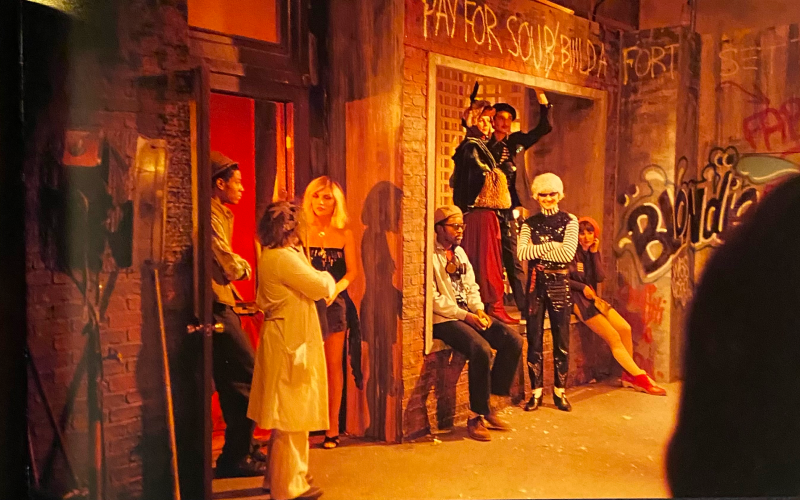
Other acts incorporated hip-hop idioms into their music. Tom Tom Club, a spinoff of new wave band Talking Heads, issued the wonderfully daffy “Wordy Rappinghood.” The Clash’s “The Magnificent Seven” found singer Joe Strummer chanting punk-rock spiels in a rap cadence to a surprisingly strong reception from Black youth. The Afro-Caribbean dance-fusion act Kid Creole & the Coconuts released “Me No Pop I,” a moment for percussionist/hypeman Coati Mundi to drop a hilariously wild Nuyorican rant. The rap/new wave fusion even spread to Austria and Falco’s “Der Kommissar” as well as, less impressively, Britain’s Adam & the Ants’ “Ant Rap.”
Yet no other recording epitomized this collective excitement quite like Bernard Wright’s ‘Nard. The late jazz pianist made his bandleader debut in his teens after spending time in sessions for Tom Browne, among others. On “Haboglabotribin’,” he rapped in quirky P-Funk vocoder over a sweeping big-band arrangement. For “Chillin’ Out,” he arranged a sprightly jazz-funk track for random voices to boast in fragments, evoking the kinetic energy of the New York streets. The teenage prodigy showed that great rap music, even amid a contemporary jazz album, requires creativity and a willingness to experiment as well as fresh rhymes and dance grooves.
Meanwhile, the rap industry itself seemed trapped in stasis nearly two years after the Sugarhill Gang’s “Rapper’s Delight.” Hordes of aspiring teens continued to make their way to recording studios. They enthusiastically spat out routines as session musicians churned through workmanlike arrangements of familiar club jams. Thanks to dance music’s shift from string-laden Chic-style disco to boogie-funk bass and synths, these sessions proved a slight upgrade over the 1980 season. Taana Gardner’s “Heartbeat” was a frequent inspiration, leading to Treacherous Three’s “Feel the Heartbeat,” Sweet G’s “A Heartbeat Rap,” and Pee Wee Mel and Barry B’s “Life on the Planet Earth.” So was Tom Tom Club’s “Genius of Love,” which fueled Grandmaster Flash & the Furious Five’s “It’s Nasty (Genius of Love)” and Dr. Jeckyll & Mr. Hyde’s “Genius Rap.”
The same labels continued to dominate. Sugar Hill remained number one, the only imprint successful enough to issue a full-length artist album like Sugarhill Gang’s 8th Wonder. Enjoy Records churned out 12-inches that rivaled Sugar Hill in quality, if not in radio exposure and sales. P&P Records dropped its share of random singles, albeit with genuine Bronx stars like Lovebug Starski now joining the parade.
Some records were better than others. Yet a New York hip-hop fan could still argue that the live tapes were better than anything from the rap labels. Behind the scenes, however, new entrants like Profile and Tommy Boy promised to revitalize the industry. At the latter, Afrika Bambaataa and producer Arthur Baker worked on Afrika Bambaataa & the Jazzy 5’s “Jazzy Sensation,” a rip of Gwen McCrae’s “Funky Sensation.” Their efforts didn’t truly pay off until the following year’s “Planet Rock.”
Most importantly, there’s “The Adventures of Grandmaster Flash on the Wheels of Steel.” The single not only found Flash dropping the first official example of rhythmic scratching on wax — crate diggers will note how the 1980 Bozo Meko bootleg “Flash on the Beat” also has scratching — but also whipping together several 12-inch hits into a groundbreaking mix. He kicked off with Blondie’s shout-out to him, blended Chic’s “Good Times” with Queen’s “Another One Bites the Dust,” and cut up his group’s “The Birthday Party.” For fans who didn’t live in the tri-state area, “Wheels of Steel” was a historic glimpse into the kind of real hip-hop flavor everyone seemed to be looking for.
The 50 Best Rap Singles of 1981

- Afrika Bambaataa & The Jazzy 5, “Jazzy Sensation (Bronx Version)” (Tommy Boy Records)
- Bernard Wright, “Chillin’ Out” (Arista GRP)
- Bernard Wright, “Haboglabotribin'” (Arista GRP)
- Blondie, “Rapture” (Chrysalis)
- The Boogie Boys, “Rappin’ Ain’t No Thing” (Mike & Dave Records)
- Busy Bee, “School Days” (Master Five)
- Cholly Rock and the Avenue B. Boogie Band, “Cash Money” (GMI Records)
- The Clash, “The Magnificent Seven” (Epic)
- Crash Crew, “We Want to Rock” (Sugar Hill)
- Disco Daddy & Capt. Rapp, “The Gigolo Rapp” (Rappers Rapp Disco Co.)
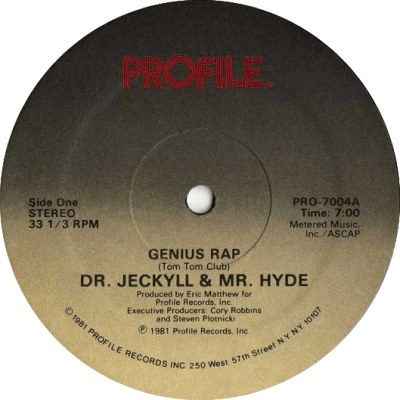
- The Disco Four, “Do It, Do It” (Enjoy Records)
- Doctor Ice, “Calling Doctor Ice” (Enjoy Records)
- Dr. Jeckyll & Mr Hyde, “Genius Rap” (Profile)
- Dr. Love & Sister Love, “Doctor Love & Sister Love Rap” (Heavenly Star Records) (1980/1981?)
- Edwin Birdsong, “Rapper Dapper Snapper” (Salsoul Records)
- Falco, “Der Kommissar (Rap’ That)” (GiG Records)
- The Furious Five Meets The Sugarhill Gang, “Showdown” (Sugar Hill)
- Gil Scott-Heron, “‘B’ Movie” (Arista)
- Grand Master Chilly-T & Stevie G, “Rock the Message Rap” (12 Star Records)
- Grand Master Flash & Furious Five, “It’s Nasty (Genius of Love)” (Sugar Hill)
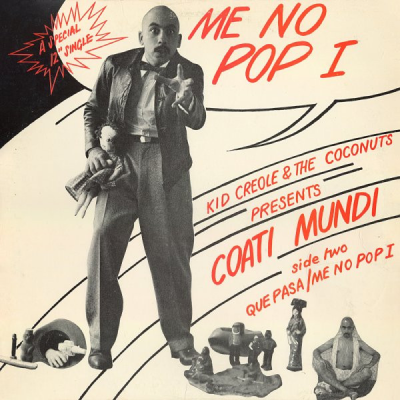
- Grand Wizard Theodore/The Fantastic Romantic 5, “Can I Get a Soul Clapp ‘Fresh out the Pack'” (Soul-O-Wax Inc.) (1981/1982?)
- Grandmaster Flash and the Furious Five, “The Birthday Party” (Sugar Hill)
- Grandmaster Flash and the Furious Five, “The Adventures of Grandmaster Flash on the Wheels of Steel” (Sugar Hill)
- The Just Four, “Girls of the World” (Grand Groove Records)
- Kid Creole & the Coconuts present Coati Mundi, “Me No Pop I” (Antilles / Ze Records)
- Kool Kyle (The Starchild), “It’s Rockin Time (Rock Rockin Time)” (Enjoy Records)
- Kurtis Blow, “Hard Times” (Mercury)
- Little Starsky, “Dancin’ Party People” (Golden Flamingo Records)
- Little Starsky, “Gangster Rock” (Golden Flamingo Records)
- Love Bug Star-Ski & The Harlem World Crew, “Positive Life” (Tay-Ster Records Inc.)
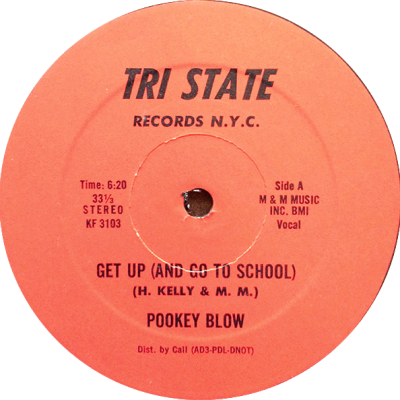
- Margo’s Kool Out Crew, “Death Rap” (Heavenly Star Records)
- The Mean Machine, “Disco Dream” (Sugar Hill)
- Pee Wee Mel and Barry B, “Life on the Planet Earth” (12 Star Records)
- Pookey Blow, “Get Up and Go to School” (Tri State Records N.Y.C.)
- Quincy Jones, “The Dude” (A&M Records)
- Solo Sound, “Get the Party Jumpin” (Express)
- Spanish Fly and the Terrible Two, “Spanglish” (Enjoy Records)
- Spoonie Gee, “Spoonie Is Back” (Sugar Hill)
- Steve Walker, “Tally Ho! (At the Party!)” (Walker Street Records)
- Sugar Daddy, “One More Time” (BC Records)
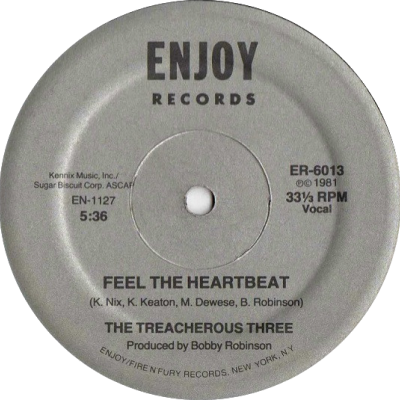
- Sugar Hill Gang, “Apache” (Sugar Hill)
- Sweet G, “A Heartbeat Rap” (West End Records)
- T-Ski Valley, “Catch the Beat” (Grand Groove Records)
- TJ Swann & Company, “Get Fly” (Express)
- Tom Tom Club, “Wordy Rappinghood” (Sire)
- The Treacherous Three, “Feel the Heartbeat” (Enjoy Records)
- The Treacherous Three, “Put the Boogie in Your Body” (Enjoy Records)
- Trickeration, “Rap, Bounce, Rockskate” / “Western Gangster Town” (Sound of New York, USA)
- Universal Two, “Dancing Heart” (Golden Flamingo Records) (1981?)
- Various, Wild Style Instrumental Beats: “Down By Law” (self-released)
Grandmaster Flash featured photo by Joe Stevens.
Photo of Cold Crush Brothers at Harlem World on July 3, 1981 by Joe Conzo Jr. Archive/Cornell University Hip-Hop Collection.
Photo of the set of Blondie’s “Rapture” video by Charlie Ahearn.
Vinyl images taken from Discogs.
Humthrush.com will always be free to read and enjoy. If you like my work, leave a tip at Ko-fi.com/humthrush.
